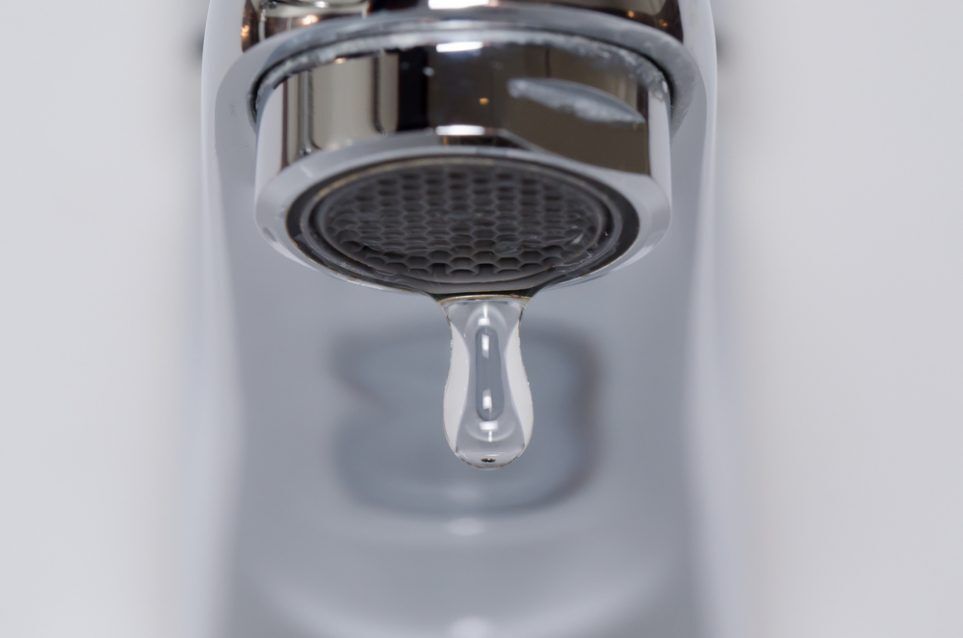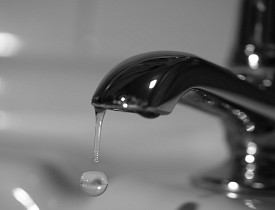Why It's Required to Fix a Faulty Faucet
Why It's Required to Fix a Faulty Faucet
Blog Article
How do you actually feel about How to Fix a Dripping or Leaky Faucet ?

Trickling taps could feel like a minor aggravation, yet their effect exceeds just the annoyance of the sound. From wasting water to sustaining unnecessary economic prices and health risks, disregarding a dripping tap can bring about numerous effects. In this post, we'll explore why it's crucial to resolve this typical home issue promptly and properly.
Waste of Water
Environmental Impact
Dripping taps contribute significantly to water wastefulness. According to the Environmental Protection Agency (EPA), a single tap leaking at one drip per secondly can lose more than 3,000 gallons of water per year. This not just strains water resources yet likewise affects ecological communities and wild animals dependent on them.
Step-by-Step Overview to Repairing a Dripping Tap
Devices Required
Prior to attempting to take care of a leaking faucet, collect the required devices, including a flexible wrench, screwdrivers, replacement components (such as washers or cartridges), and plumber's tape.
Usual Faucet Issues and Their Solutions
Determine the type of tap and the certain issue creating the drip. Common troubles include damaged washing machines, corroded shutoff seats, or defective O-rings. Describe producer guidelines or online tutorials for detailed assistance on fixings.
Financial Costs
Raised Water Bills
Past the ecological effect, trickling faucets can pump up water costs substantially. The built up wastage gradually translates into greater energy expenses, which might have been stayed clear of with prompt repair work.
Prospective Residential Or Commercial Property Damages
In addition, prolonged leaking can bring about damage to fixtures and surface areas bordering the tap. Water accumulation can cause staining, rust, and also architectural concerns if left neglected, leading to added repair costs.
Health and wellness Worries
Mold And Mildew and Mold Development
The consistent visibility of dampness from a trickling tap develops a suitable setting for mold and mildew and mold development. These fungis not just endanger interior air top quality yet likewise present health and wellness threats, specifically for individuals with respiratory problems or allergic reactions.
Waterborne Conditions
Stationary water in trickling taps can end up being a breeding ground for germs and other pathogens, increasing the risk of waterborne conditions. Impurities such as Legionella microorganisms prosper in stationary water, potentially resulting in serious illnesses when consumed or breathed in.
Do it yourself vs. Expert Repair work
Advantages and disadvantages of DIY Repair
While some might try to repair a dripping tap themselves, do it yourself repair work come with their own collection of difficulties. Without proper expertise and tools, DIY attempts can aggravate the issue or lead to insufficient fixings, extending the problem.
Advantages of Employing a Professional Plumber
Employing a professional plumber guarantees that the underlying reason for the trickling tap is addressed efficiently. Plumbers possess the knowledge and devices to detect and repair tap issues effectively, saving time and decreasing the risk of further damage.
Ecological Obligation
Individual Payment to Preservation
Taking obligation for fixing trickling faucets lines up with broader initiatives towards water conservation and ecological sustainability. Every person's activities collectively make a substantial impact on protecting priceless resources.
Lasting Living Practices
By prioritizing timely fixings and adopting water-saving routines, people contribute to sustainable living techniques that benefit both present and future generations.
Safety nets
Normal Maintenance Tips
To avoid leaking faucets, carry out regular upkeep such as cleansing aerators, inspecting for leaks, and replacing damaged components promptly. Furthermore, think about mounting water-saving tools or upgrading to much more effective fixtures.
Value of Prompt Services
Addressing dripping faucets as quickly as they're seen prevents further water wastage and potential damage, ultimately saving both water and money over time.
Effect On Building Worth
Assumption of Well-Maintained Property
Maintaining a residential property in good condition, consisting of attending to maintenance problems like dripping faucets, enhances its perceived worth and worth amongst prospective buyers or tenants.
Impact on Resale Value
Characteristics with well-maintained plumbing components, consisting of taps, command higher resale worths in the property market. Resolving leaking faucets can contribute to a favorable perception during property inspections and arrangements.
Final thought
Dealing with a dripping tap exceeds mere convenience; it's a crucial action toward preserving water, decreasing financial expenses, and securing health and property. Whether with DIY fixings or expert assistance, doing something about it to repair trickling faucets is a tiny yet impactful method to advertise responsible stewardship of sources and contribute to a much healthier, much more lasting future.
How to Fix a Leaky Faucet: Step-by-Step Repair Guide
A leaky faucet may seem like a simple annoyance, but if it's not fixed promptly, that leak could cost hundreds to potentially thousands. From water damage to mold, mildew, and high water bills, even a tiny leak can be catastrophic if left unattended. Damage like this can even affect the overall value of your home, so it's important to take the right approach for leaky faucet repair. You may need the help of a plumber in some cases, but we've got a few tips you can try on how to fix a leaky faucet before calling the pros.
Four Faucet Types
When you're learning how to fix a leaky faucet, the first step is knowing what kind of faucet you're working with! There are four common types.
Cartridge Faucets
Cartridge faucets come in one- or two-handled varieties. In one-handled cartridge faucets, hot and cold water combines in a single cartridge. In the two-handled versions, hot and cold water are controlled separately and mixed in the faucet.
Ball Faucets
Ball faucets have a single lever you push up and down to adjust the pressure and rotate to change the temperature. A slotted metal ball controls the amount of water allowed into the spout.
Compression Washer Faucets
They're the oldest type of faucet, but they're still used in many homes — especially older ones. Compression faucets have two separate handles that, when turned, raise or lower the washer that seals a water valve. This valve stops water from flowing through the faucet when it is turned off.
Disc Faucets
Disc faucets rarely need to be repaired due to their maintenance-free design. The water flow is controlled by two discs — the upper one raises and lowers against a fixed lower disc, creating a watertight seal. If your disc faucet starts leaking, you may need to replace the seals or clean residue buildup from the inlets.
Fixing a Leaky Faucet
Step 1: Turn Off the Water
Whether you're learning how to fix a leaky bathtub faucet or how to fix a leaky kitchen faucet, always turn off the water supply to your working area when you're fixing a leak. The last thing you want is a flood added to your list of things to fix.
Look for the shutoff valves below your sink or around the tub and turn them clockwise to stop the water flow. If your faucet doesn't have shutoff valves, you may need to turn off the water for the whole house. Check to make sure it's off by turning the faucet on. If nothing comes out, you're ready to start the repair.
Step 2: Take Apart the Faucet
How you disassemble your faucet depends on the type of fixture you have. You can use a flathead screwdriver to remove the caps on top of the handle or handles for cartridge and compression faucets. Inside, you should see handle screws. Unscrew these with a screwdriver to remove the handle.
Disc- and ball-style faucets will typically have an inlet screw near the handle, and removing that will reveal the interior of the faucet.
Detach the Valve Stem
For cartridge- and compression-style faucets, you'll see the inner valve stem or cartridge once you remove the faucet handles. If you have a compression faucet, unscrew the brass valve stem. If you have a cartridge faucet, pull out the cartridge. If your cartridge has been in place for a while, it may require some tools or extra force to remove it due to mineral deposits.
Examine and Replace Parts
Once you've removed the parts, check them out to confirm what needs to be replaced. You may see corroded rubber washers, O-rings, stems, or cartridges. On a ball-style faucet, check the seats and springs for damage.
If you need to repair a leaky disc faucet, check the inlet and seals on the lower disc.
Once you determine what parts must be replaced, visit your local hardware store. Bring the damaged parts with you to ensure you can purchase the correct components to replace them.
Clean Valves and Faucet Cavity
If you've removed a stem or cartridge, you may notice mineral buildup in the faucet's threads. Use white vinegar to clean the valve seat by soaking it for a few minutes, then scrub it away with a soft toothbrush and rinse with warm water. You can also clean the interior of the faucet in the same way.
Reassemble the Faucet
Once your faucet is cleaned and the required parts have been replaced, it's time to reassemble it. Put the pieces back together and slowly turn the water supply back on. Doing this slowly is crucial because too much initial water pressure can damage the new hardware you've just installed.
https://homewarranty.firstam.com/blog/how-to-fix-leaky-faucet

I was shown that editorial on from a buddy on our other website. Are you aware of someone else who is very much interested in How to Fix a Dripping or Leaky Faucet ? Take a moment to promote it. Kudos for your time. Don't forget to stop by our website back soon.
Report this page